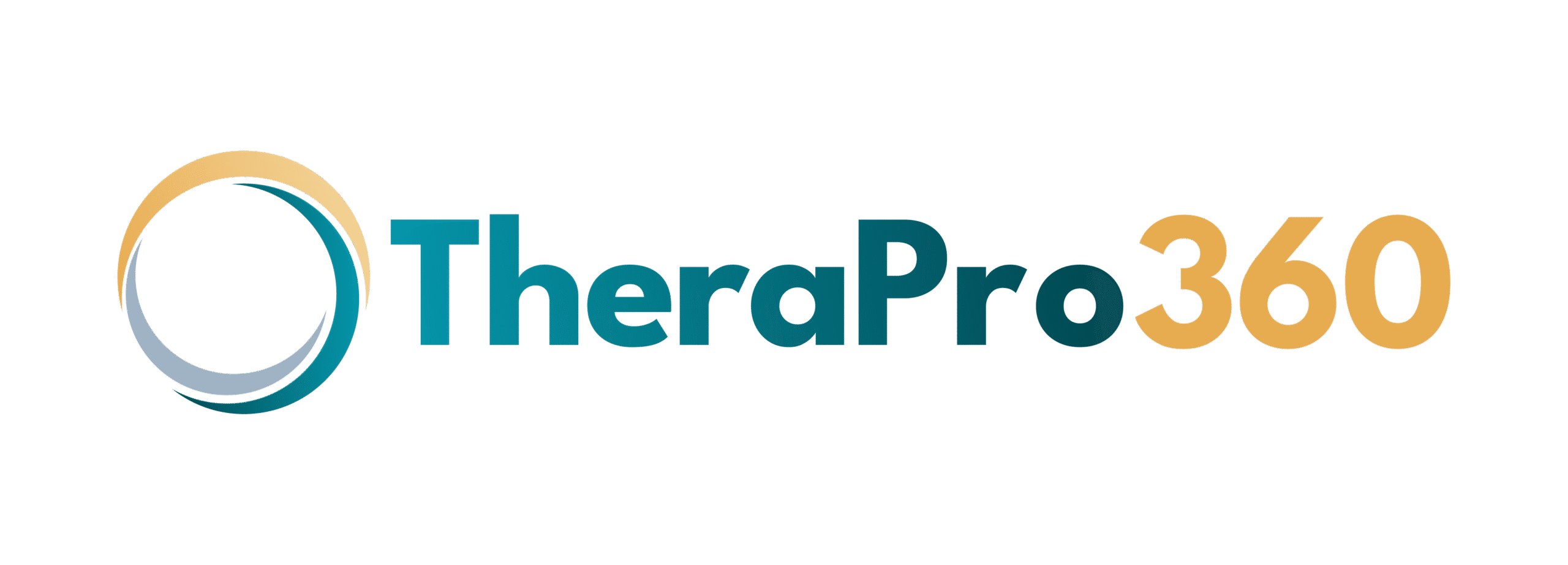
Blog
The Benefits of Digital Documentation for Speech Therapists
Expert web designers ensure the site and software is easy to use.The Benefits of Digital Documentation for Speech Therapists
Clinical documentation is the backbone of effective speech therapy. It’s how you track progress, justify services, and communicate value to clients and payers. Yet, for many therapists, documentation is a source of stress and inefficiency. Mountains of paperwork, hard-to-read notes, and scattered files can consume hours of valuable time, pulling you away from patient care and creating significant compliance risks.
The days of relying on paper files and disconnected spreadsheets are numbered. The shift to secure, integrated digital systems is not just a trend; it’s a fundamental change that is making practices more efficient, secure, and effective. By embracing digital documentation, you can transform this daily chore into a powerful tool for clinical insight and operational excellence.
This guide will explore the profound benefits of digital documentation for speech therapists. We’ll break down what it is, how it works within a modern practice management software for speech therapists, and why it is essential for compliance, efficiency, and delivering the highest quality of care.
Why Digital Documentation Matters in Modern Speech Therapy
In a modern practice, the way you manage information is just as important as the therapy you provide. Outdated documentation methods create friction that slows down your entire operation, while digital systems provide the streamlined foundation needed to thrive.
How paperwork challenges slow down clinical efficiency
Manual, paper-based documentation is riddled with inefficiency. Think about the time spent on tasks like:
- Searching for misplaced patient files.
- Deciphering illegible handwriting.
- Manually transferring information from a session note to a billing sheet.
- Photocopying and faxing records to doctors or insurance companies.
- Storing and securing rooms full of filing cabinets.
Each of these small tasks adds up, consuming hours every week that could be spent on billable client activities, professional development, or strategic planning. Paperwork becomes a constant drag on clinical productivity.
The shift from manual records to secure digital systems
The transition to digital documentation represents a move from a chaotic, manual process to an organized, automated one. Secure digital systems, particularly those integrated within a comprehensive practice management platform, centralize all patient information. This means records are instantly accessible, legible, and secure. This shift is about more than just convenience; it’s about building a more professional, reliable, and scalable practice.
Why documentation is essential for compliance and quality care
Proper documentation is not just “good practice”; it’s a requirement for legal and ethical care. Your notes serve several critical functions:
- Clinical Record: They provide a detailed history of the client’s progress, which is essential for making informed clinical decisions.
- Legal Protection: A well-documented record is your best defense in the event of a dispute or legal challenge.
- Payer Justification: Insurance companies require detailed documentation to prove that services were medically necessary before they will reimburse you.
- Continuity of Care: Clear notes ensure that another therapist can seamlessly take over a case if needed.
Without accurate and thorough documentation, you risk claim denials, compliance penalties, and a lower standard of care.
What Is Digital Documentation in Speech Therapy?
Understanding the terminology is the first step toward embracing the technology. Digital documentation is a broad concept that is best implemented through specific software tools.
Defining digital documentation and EMR for SLPs
Digital documentation is the process of creating, storing, and managing clinical records in an electronic format. This replaces paper charts with digital files. An Electronic Medical Record (EMR) is the software application used to do this. For speech therapists, an EMR is a digital version of a patient’s chart. It contains their treatment plans, progress notes, assessment reports, and demographic information. Some may also refer to this as an Electronic Health Record (EHR).
How it fits within practice management software
The most powerful EMRs are not standalone products. They are a core module within a larger, integrated practice management software for speech therapists. In this type of all-in-one system, the EMR “talks” to all the other parts of the practice:
- The scheduler links appointments to notes.
- The billing module pulls codes from notes to create claims.
- The patient portal can share note summaries with clients.
This integration creates a single, seamless workflow for the entire practice.
The difference between digital and electronic records
While often used interchangeably, there is a subtle distinction. “Digital records” can refer to any electronic file, like a scanned PDF of a paper form. An “electronic record” within an EMR is more structured. The data is entered into specific fields, making it searchable, reportable, and easy to analyze. A true EMR doesn’t just store an image of a note; it stores the data from the note in a way that the computer can understand and use, which is what unlocks the power of automation and analytics.
Key Benefits of Digital Documentation for Speech Therapists
Moving from paper to a digital EMR system delivers a host of benefits that impact every corner of your practice, from clinical efficiency to financial performance.
Improved efficiency through automation and templates
This is one of the most immediate benefits. A good EMR streamlines note-writing with features like customizable templates, drop-down menus, and the ability to carry forward information from previous notes. You can complete your daily notes in a fraction of the time it takes to write them by hand.
Greater accuracy and consistency in patient notes
Paper notes are prone to errors, omissions, and illegibility. Digital templates ensure that all necessary components of a note are included every time, leading to more consistent and complete documentation. This standardization improves the overall quality of your clinical records.
Enhanced data security and HIPAA compliance
Paper records are vulnerable to being lost, stolen, or damaged by fire or water. A secure, cloud-based EMR provides a much higher level of security. Data is encrypted, backed up automatically, and protected by sophisticated security measures that are far more robust than a locked filing cabinet.
Real-time access to patient information from anywhere
With a cloud-based EMR, you can securely access a patient’s chart from your office, your home, or on the go from a tablet or smartphone. This means you can review a chart before a teletherapy session or complete a note in the evening without having to be physically present at the clinic.
Streamlined collaboration between clinicians and administrators
Digital documentation makes it easy for team members to collaborate. A treating therapist and a supervising therapist can both view and sign off on a note within the system. The billing department can instantly see when a note is complete and ready for claim submission. This real-time visibility eliminates communication delays and keeps the entire team in sync.
How Practice Management Software Simplifies Documentation
An integrated software platform is the key to unlocking the full potential of digital documentation. It transforms the EMR from a simple digital filing cabinet into the central hub of an intelligent, automated workflow.
One platform for notes, scheduling, billing, and reporting
The power of integration comes from having a single source of truth for all practice data. A client’s information is entered once and then flows seamlessly across all modules. This eliminates the need to re-enter data in multiple systems, which is a major source of inefficiency and errors.
Automated data entry and customizable templates
A smart system automates as much of the note-writing process as possible.
- The patient’s name, date of service, and appointment time are pulled automatically from the schedule.
- CPT codes can be linked to appointment types, so the correct billing code is suggested.
- You can create custom templates for different types of notes (e.g., evaluation, progress note, discharge summary) with your preferred fields and layouts.
Linking session data to progress tracking and billing
This is where integration becomes a game-changer.
- Progress Tracking: When you enter quantitative data for a goal in your note (e.g., 85% accuracy), the system can automatically use that data to update a visual graph showing the client’s progress over time.
- Billing: Once you sign your note, the system can automatically generate a claim with the correct patient information, diagnosis codes, and procedure codes, ready for submission. This direct link between documentation and billing ensures accuracy and dramatically speeds up the revenue cycle.
Integrating documentation with telehealth and online portals
An integrated system extends the benefits of digital documentation to your virtual services.
- Telehealth: You can have the patient’s EMR chart open right next to your telehealth video window, allowing for efficient in-session note-taking.
- Online Portals: You can securely share simplified note summaries or progress reports with clients and caregivers through the patient portal, keeping them engaged and informed.
Boosting Efficiency with Digital Workflows
The cumulative effect of these digital features is a massive boost in overall practice efficiency.
Reducing administrative workload for SLPs
Therapists often report spending hours on paperwork after their clinical day is done. Digital documentation can cut note-writing time by 50% or more. This reclaimed time can be used for patient care, treatment planning, or simply achieving a better work-life balance, which is crucial for preventing burnout.
Eliminating duplication and paperwork errors
Think of all the times patient information is written down manually: on an intake form, on a superbill, on a schedule, on a note. Each time presents an opportunity for a transcription error. In a digital system, the data is entered once and then flows automatically, eliminating redundant work and the errors that come with it.
Faster turnaround for insurance claims and reports
When documentation is legible, complete, and instantly accessible, the entire billing process speeds up. The billing team doesn’t have to chase down therapists for missing notes or try to decipher handwriting. Claims are submitted faster, and if an insurer requests supporting documentation, a complete, professional-looking packet of notes can be generated and sent in minutes, not hours.
How digital tools free up more time for patient care
By automating and streamlining the administrative burdens of documentation, digital tools give therapists their most valuable resource back: time. Every minute not spent on paperwork is a minute that can be dedicated to what really matters—planning creative sessions, collaborating with colleagues, and providing hands-on, high-quality care to patients.
Enhancing Accuracy and Consistency in Patient Records
The quality and consistency of your clinical records are a direct reflection of your practice’s professionalism. Digital tools provide the structure needed to maintain a high standard for every client.
Standardized templates for evaluations and progress notes
Customizable templates are a cornerstone of consistent documentation. You can design templates that ensure every therapist in your practice includes the same critical information in every note, such as subjective reports, objective data, assessment, and plan (SOAP). This standardization is invaluable for quality assurance and training new staff.
Real-time data validation and version tracking
Digital systems can have built-in checks to prevent common errors. For example, the system might flag a note if a required signature is missing or if a billing code doesn’t match the diagnosis. It also provides version tracking, so you can see if a note was changed after it was initially signed, which is important for compliance.
Automatic updates and synchronization across users
In a cloud-based system, when one user makes a change, it is instantly visible to all other authorized users. If a therapist updates a treatment plan, the supervising SLP can see the changes immediately. This real-time synchronization ensures everyone is working with the most current information, preventing confusion and errors.
Improved decision-making through complete patient histories
With a digital EMR, a client’s entire clinical history is available at your fingertips in a clean, organized format. You can easily review past goals, track progress over long periods, and see data from previous assessments. This comprehensive view allows you to make better-informed clinical decisions and create more effective treatment plans.
Keeping Patient Data Secure and HIPAA-Compliant
In the digital age, data security is paramount. A professional, cloud-based EMR offers a level of security that is far superior to paper-based systems.
Encryption, secure logins, and role-based access controls
These are the three pillars of digital security under HIPAA.
- Encryption: A secure EMR encrypts all your data, both when it’s stored on the server (“at rest”) and when it’s being transmitted (“in transit”). This makes the data unreadable to any unauthorized party.
- Secure Logins: Every user must have a unique, strong password to access the system.
- Role-Based Access Controls (RBAC): As the practice owner, you can define permissions for each user role, ensuring employees can only access the “minimum necessary” information required for their job.
Reducing the risk of data loss and unauthorized access
Paper files can be easily lost, misfiled, or damaged. They can also be viewed by anyone who happens to be in the office. A secure digital system mitigates these risks. Data is stored in secure data centers with multiple backups, protecting it from physical loss. Strict access controls prevent unauthorized staff or visitors from viewing sensitive information.
Built-in audit trails for accountability and compliance
A key HIPAA requirement is the ability to audit who has accessed PHI. A good EMR automatically creates a detailed, unchangeable audit trail that logs every single time a user views, creates, or modifies a patient’s record. This provides critical accountability and is essential for any security investigation.
Why cloud-based documentation is safer than paper files
While some may worry about the cloud, a reputable, HIPAA-compliant cloud EMR vendor invests in a level of security that would be prohibitively expensive for a single practice to replicate. They have teams of security experts, redundant servers, disaster recovery plans, and constant monitoring for threats. For a small practice, entrusting your data to such a vendor is far more secure than storing it on a local server in a closet or in a physical filing cabinet.
How TheraPro360 Supports Secure and Efficient Documentation
Choosing a software platform designed with the specific needs of therapists in mind is key to a successful transition to digital documentation. TheraPro360 provides a fully integrated solution to streamline and secure your clinical records.
Digital documentation designed for speech therapists
TheraPro360 offers documentation features built for the therapy workflow. This includes customizable templates for evaluations, progress notes, and treatment plans, as well as therapy-specific fields and goal-tracking formats that align with how SLPs work.
HIPAA-compliant data management and secure cloud storage
With TheraPro360, all your practice data is protected by enterprise-grade security. The platform is fully HIPAA-compliant, and all data is encrypted and stored in secure cloud data centers. This gives you peace of mind that your clients’ sensitive information is protected.
Seamless integration with scheduling, billing, and telehealth
The power of TheraPro360 lies in its seamless integration. Clinical notes are directly linked to the schedule and billing modules, creating an automated workflow that reduces errors and saves time. Data flows effortlessly, ensuring consistency across your entire practice.
Customizable templates to fit every therapy workflow
Every practice is unique. TheraPro360 allows you to build your own documentation templates from the ground up or modify existing ones. This flexibility ensures that the software can adapt to your specific clinical style and documentation requirements.
Learn more about TheraPro360’s documentation features
By combining therapy-specific design with powerful automation and robust security, an integrated platform can transform your documentation process from a burden into an asset. To see these features in action, (insert internal link to features or documentation page).
Transitioning from Paper to Digital Documentation
Making the switch from paper to digital can feel like a daunting project, but with a structured approach, it can be a smooth and successful process.
Steps to digitize your existing patient files
You have a few options for your old paper charts. You can either scan them all into a digital format (a time-consuming process) or adopt a “go-forward” approach. Many practices choose to maintain their existing paper charts for archive purposes and start all new documentation in the digital system. For active clients, you can scan and upload their most recent key documents (like their last evaluation and treatment plan) into the new EMR.
Training staff and clinicians for a smooth transition
Proper training is the single most important factor for a successful transition. Your software vendor should provide comprehensive training for all roles—therapists, schedulers, and billers. Involve your team in the setup process to build buy-in. Start with a “pilot” group of therapists to use the system for a week or two to work out any kinks before rolling it out to the entire practice.
Setting up secure backups and access protocols
If you are using a cloud-based EMR, the vendor handles the data backups automatically. Your primary task is to set up the user access protocols. Carefully define the roles and permissions for each staff member to ensure they only have access to the information they need.
How to maintain compliance during the migration process
During the transition, you must ensure that the PHI on your old paper records remains secure. Keep them in a locked, secure location. If you hire a third-party service to scan old records, you must have a signed Business Associate Agreement (BAA) with them.
Measuring the ROI of Digital Documentation
Investing in an EMR is not an expense; it’s an investment with a clear and measurable return on investment (ROI).
Time saved per session and per week
This is the most immediate return. Calculate the average time your therapists spend on documentation per day with paper records. After implementing the EMR, track that time again. Reducing documentation time by just 30-60 minutes per day per therapist can add up to hundreds of saved hours and thousands of dollars in labor costs per year.
Fewer errors and reduced rework
Digital systems reduce errors in billing and documentation, which means less time spent on correcting claims, responding to denials, and reworking notes. This “rework” is a hidden cost that digital documentation helps to eliminate.
Faster reimbursement cycles through accurate billing
When claims are generated automatically from accurate, complete documentation, they get paid faster. A cleaner claims process leads to a shorter revenue cycle, which means cash arrives in your bank account sooner. This improved cash flow is a major financial benefit.
Increased patient satisfaction through smoother operations
While patients may not see your documentation system directly, they feel its effects. A practice that runs smoothly—with efficient scheduling, clear billing, and organized communication—provides a better overall client experience. This leads to higher patient satisfaction and retention.
The Future of Digital Documentation in Speech Therapy
Digital documentation is not the end of the evolution; it’s the platform for the next wave of innovation in therapy.
AI-driven automation and smart note suggestions
Artificial intelligence (AI) will begin to play a larger role in documentation. Future systems may be able to transcribe parts of a session, suggest relevant billing codes, or even draft narrative summaries based on the structured data you enter. This will further reduce the administrative burden on therapists.
Integrated analytics for outcomes tracking
As EMRs collect more structured data, they will offer more powerful analytics tools. You’ll be able to easily track outcomes across your entire practice, compare the effectiveness of different interventions, and demonstrate the value of your services with robust, data-backed reports.
How digital documentation supports hybrid and remote care models
A cloud-based EMR is essential for a flexible, modern practice. It ensures that therapists can securely access all the information they need, whether they are working in the clinic, from home, or on the go. This is the technological backbone of a successful hybrid or fully remote care model.
Preparing your practice for next-generation digital workflows
The best way to prepare for the future is to build a strong digital foundation today. By adopting a modern, integrated practice management system with a robust EMR, you are not just solving today’s paperwork problems; you are positioning your practice to take advantage of the next generation of digital innovations.
Conclusion: Streamline, Secure, and Simplify Your Documentation
Documentation is a non-negotiable part of professional speech therapy, but it doesn’t have to be a burden. By transitioning from outdated paper-based methods to a modern digital system, you can streamline your workflows, secure your data, and simplify your daily operations.
Why digital documentation is essential for modern SLPs
Digital documentation saves time, reduces errors, enhances security, and improves the quality and consistency of your clinical records. It is the professional standard for a modern, efficient speech therapy practice.
How practice management software transforms efficiency and care quality
The true power of digital documentation is unleashed when it’s part of an integrated practice management software for speech therapists. This all-in-one approach automates workflows, provides critical data insights, and frees up clinicians to focus on delivering the highest quality of care.
Start your journey with TheraPro360’s all-in-one platform
The journey to a more efficient and secure practice begins with choosing the right technology partner. An integrated platform provides the tools you need to succeed in the digital age of therapy. (final CTA link).
FAQs About Digital Documentation in Speech Therapy
Is digital documentation HIPAA-compliant?
Yes, provided you use a software platform that is specifically designed for healthcare and is HIPAA-compliant. Key features to look for are data encryption, role-based access controls, audit trails, and a vendor who will sign a Business Associate Agreement (BAA).
How can digital documentation save time for speech therapists?
It saves time through features like customizable templates, which pre-populate parts of your note; automation, which pulls in data from the schedule; and integration, which eliminates the need to re-enter billing information. These efficiencies can reduce note-writing time significantly.
What’s the best software for speech therapy documentation?
The best software is an integrated practice management software for speech therapists that combines a therapy-specific EMR with scheduling, billing, and other practice tools. Look for a platform with customizable templates and features designed for the unique workflow of SLPs.
Can I integrate digital notes with billing and telehealth?
Yes, this is one of the most significant benefits of an all-in-one system. A truly integrated platform will automatically link your signed clinical note to the billing module to create a claim. It will also allow you to access your EMR and write notes during a live telehealth session, all within the same application.
Why TheraPro360?
Run your practice with simplicity with our streamlined scheduling, seamless telehealth integration, centralized patient portals, intuitive calendar management, and automated invoicing.
Get Started Today















